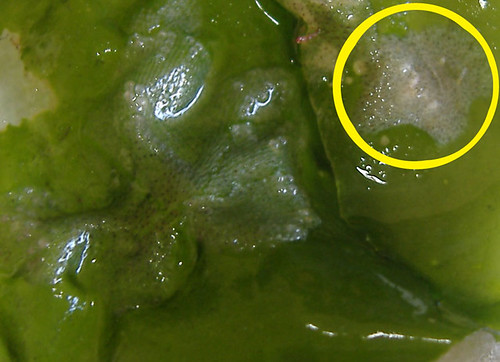
This a picture of a dorid nudibranch (
Doridella steinbergae) and a bryozoan (
Membranipora). Can you tell which is which?
The bryozoan is an encrusting animal that generally lives on kelps and also green algae. There is some debate as to if Membranipora is harmful to the kelp, but in general it is thought is can block the absorption of nutrients because it grows over the kelp.
Doridella is one of the few predators of Membranipora and is camouflaged to blend in with its prey. Normally, dorid nudibranchs have a circle of gills visible on their back, but Doridella’s gills are located behind the foot under a flap of skin. This helps them blend in better with the bryozoan. They feed on Membranipora by creating a suction seal, using their rasping tongue (called a radula) to cut through the outer membrane, then they suck out the insides.
Membranipora can create spines in response to predation by Doridella. Just put Membranipora in some seawater that has the nudibranch’s chemical cues in it, and it will make spines to protect itself from attack.
So did you find Doridella?
The two bumps on the top right are Doridella’s rhinophores, used for chemoreception. Only nudibranchs have rhinophores, so that’s the tip off.







